Crews work 15 hours at a time, hauling traps and sorting catch
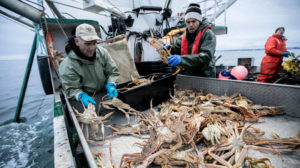
Captain Bertrand Desbois sets off aboard the Dauphin III from the Port of Matane at 5 a.m., eager to check in on the first Quebec snow crab traps of the season, launched the night before.
Radio-Canada journalist Maxime Corneau accompanied the crew of seven on their first fishing expedition of 2018 and documented what he saw.
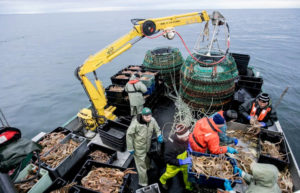
A few minutes out, the boat comes up alongside two pink buoys announcing the kilometre-long line where some 20 trapsare sunk.
“It’s a strong start, like last year,” says Desbois as the traps are raised out of the water by a winch.
He stands and oversees the operation from his cabin; one eye on the horizon and the other on the crabs piling up on the sorting table.
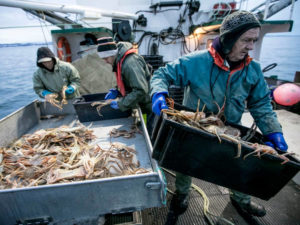
At the sorting table, the most experienced workers toss the small crabs and females laden down with eggs back into the water while the younger recruits replace the quickly filling bins with empty ones.
At this first stop, 20 traps are emptied of their precious contents — 1,500 kilograms of crab.
After the line is put back in the water and the crowded traps are put in the hold, the fishermen take a break.
The process of hauling, rebaiting and relaunching traps will take more than 15 hours, but the fisherman work at a steady pace.
Captain Desbois will try to match last year’s quota by harvesting 230,000 kilograms of crab in less than a month.
After this fishing season, it will be lobster off Anticosti Island, then halibut, shrimp and so on.
After two hours of unloading at the dock, the majority of the thousands of kilograms of crab caught that day will head west to supply the family fish counter in Quebec City.
The truck will leave in the middle of the night, around 1:30 a.m., after the official weigh-in.
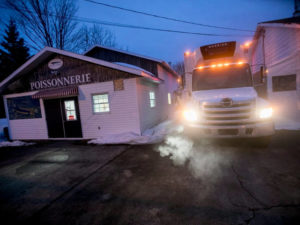
The delivery truck that goes to Quebec stops from time to time to deliver small quantities of crab to long-standing fish markets.
After six hours of driving, buyers are already lining up at the fish counter of Marché du Vieux-Port.
Nobody hesitates to shell out $7.95 per pound of fresh crab.
Among them is chef Raphaël Vézina, co-owner of Laurie Raphaël on Dalhousie Street.
“It’s the first product to come after a long winter,” said Vézina as he walks back to his restaurant.
His recipe for cooking crab is simple. Boil a large pot of salt water and throw in a few crab sections for eight minutes, no more or less.
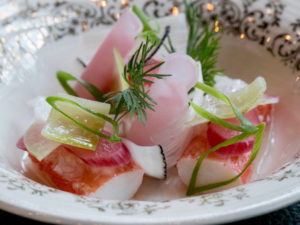
The crab is then put on ice, shelled and inspected with a black light to ensure no piece of shell will end up on customer’s plate.
“It’s a product that we’re so lucky to have. It’s part of our wealth,” says Vézina. “For a Quebec chef, it’s fabulous.”


